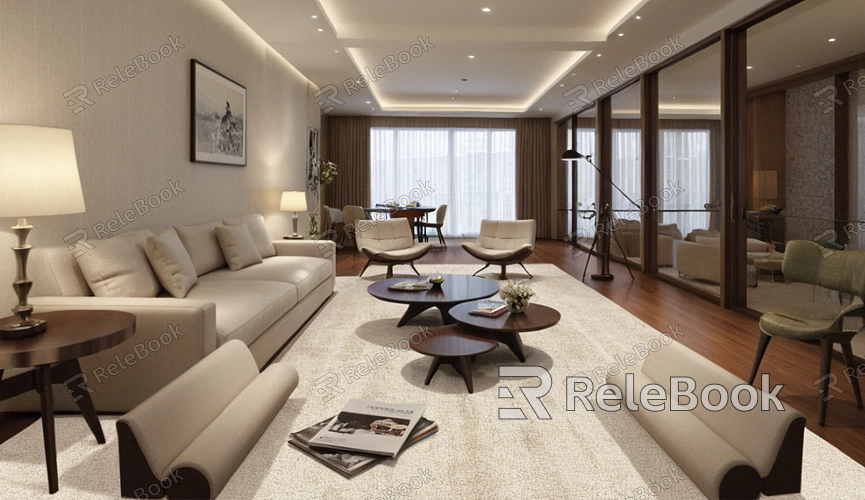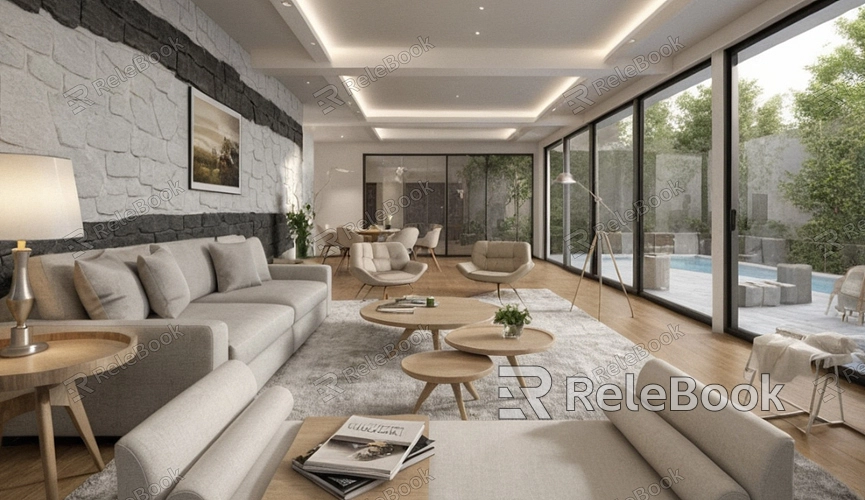How to Make 3D Models Look Realistic?
3D modeling is increasingly crucial in film animation, game design, architectural visualization, and virtual reality. The realism of a 3D model directly impacts the visual experience and project quality. To make 3D models look realistic, not only do you need the right technical skills, but also an eye for detail and artistic expression. This article explores various methods and techniques to achieve highly realistic 3D models.

High-Quality Textures and Mapping
Choosing high-resolution texture maps can significantly enhance the realism of your 3D model. By using high-quality textures, you can simulate the finer details of surfaces like wood grain, metallic shine, fabric fibers, and more. When creating textures, make sure to use different maps for different parts of the object and precisely adjust the mapping to fit the model’s surface.
Realistic Lighting Effects
Lighting plays a crucial role in the appearance of 3D models. By simulating real-world lighting conditions, you can add depth and realism to your model. Utilize global illumination techniques and combine primary light sources, secondary light sources, and ambient light to accurately recreate light and shadow effects. Additionally, do not overlook the adjustments in light angles and intensity, as proper lighting settings can sculpt the authentic contours and nuanced shadows of the model.
Detailed Modeling
High-quality 3D models depend on meticulous modeling techniques. During the modeling process, focus on detailing specific parts of the model, such as facial expressions, textures, and hair for characters, or carvings, window frames, and shingles for buildings. Before modeling, conduct thorough research and observations to ensure the structure and details of the model match real-world objects, making it more realistic and engaging.

Accurate Material Properties
Different materials have unique optical properties. By adjusting the material parameters, you can accurately reproduce an object’s texture. For instance, glass requires high transparency and refractive indices, while metals need high reflectivity and gloss. Proper use of reflectivity, glossiness, and roughness parameters can accurately simulate the visual effects of different materials.
Dynamic Simulation and Physical Effects
Realistic 3D models are not just about static appearance; they also include dynamic effects and physical properties. For example, the flutter of cloth, the flow of liquids, and the collision and breaking of objects can be simulated using physics engines and dynamic simulation techniques. These can make the model behave according to physical laws, enhancing its realism and interactivity.
High-Quality Rendering and Post-Processing
Rendering is the final step in 3D model production and is crucial in determining the visual outcome. Using high-quality rendering engines combined with suitable rendering techniques, you can generate realistic images. Post-processing is also vital in enhancing realism. Through color correction, added depth of field, and detail sharpening, images can become more vivid and visually impactful.
Reference and Study the Real World
When creating 3D models, it is essential to observe and study real-world objects and scenes. By taking photos, watching videos, or visiting places, you can gather extensive reference materials and inspiration. Understanding how different objects behave in terms of light, texture, and dynamics can help extract details and techniques applicable to 3D models.
Continuous Improvement and Innovation
3D modeling technologies and tools are continuously evolving. Ongoing learning and innovation are key to improving model quality. Summarize experiences from actual projects, attend training courses, read relevant literature, and participate in industry exchanges and competitions. These activities can effectively enhance your technical skills and artistic refinement. Only by constantly striving for improvement can you create even more realistic models in the 3D modeling field.
By focusing on high-quality textures, realistic lighting effects, meticulous modeling, accurate material properties, dynamic simulation and physical effects, high-quality rendering and post-processing, referencing the real world, and continuous improvement, you can create realistic 3D models. We hope the methods and techniques provided in this article can assist you in your 3D modeling work. For high-quality 3D models and textures, please visit the Relebook website for downloads.
FAQ
How can I choose the right texture map for my 3D model?
Choose a texture map based on your model's material type and detail requirements. Opt for high-resolution textures that are detail-rich and suit the material characteristics. Ensure the map fits accurately to the model’s surface without stretching or distortion.
How can I set up realistic lighting effects?
Realistic lighting requires a combination of primary light sources, secondary light sources, and ambient light to simulate global illumination. Adjust the lighting angles and intensity to ensure natural light and shadow effects, enhancing the model’s three-dimensionality.
Why don’t the materials on my model look realistic?
Material realism may be lacking due to inaccurate parameter settings. By adjusting properties like glossiness, transparency, and reflectivity, you can better replicate the optical characteristics of different materials.
What are some tips for rendering and post-processing?
High-quality rendering begins with selecting the right rendering engine and techniques. Post-processing steps such as color correction, depth of field enhancement, and detail sharpening can significantly improve the realism of the final image.

